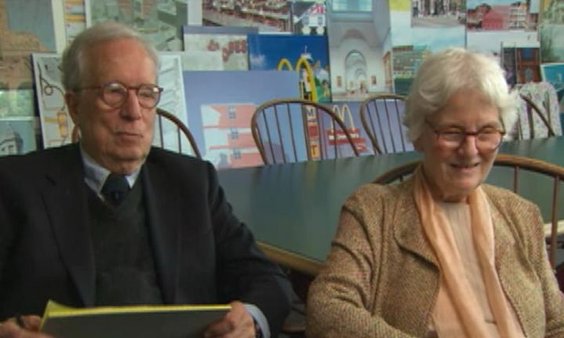NEXT STORY

Mannerism (Part 1)
RELATED STORIES

NEXT STORY

Mannerism (Part 1)
RELATED STORIES


|
Views | Duration | |
|---|---|---|---|
| 1. Architecture as flexibility; form follows functions | 3 | 1519 | 07:34 |
| 2. How urbanism has made us better designers | 1 | 307 | 05:11 |
| 3. Redefining function | 297 | 03:14 | |
| 4. Mannerism (Part 1) | 337 | 04:11 | |
| 5. Mannerism (Part 2) | 239 | 05:20 | |
| 6. Symbolism and signs | 447 | 04:10 | |
| 7. Learning the difference between 'is' and 'ought' | 169 | 06:45 | |
| 8. Protests over our use of neon | 158 | 01:11 | |
| 9. The New Objectivity | 189 | 03:34 | |
| 10. The importance of good clients; Vanna Venturi House | 220 | 03:08 |

[DSB] If we don’t believe form follows function, or if that’s one of the ways of looking at the relationship, but there are others – the way Bob brought up form accommodates function. I have said we are functionalists. The present Neo-Modern architects use forms that come from early Modernism. I call them swoop – the building swoops this way, it swoops that way, it swoops the other way, it costs too much because they put too much atrium space in, and steel and glass and it’s very impressive, but in the end what does it do for the patterns of association which are needed by people, and the ways people live? And so, from that point of view, I said we have many ways of redefining function in architecture, and we should think about that. One is to say form accommodates function, the mitten can take wiggle space, it can take different sizes of hands, it can take many things. A lab building or a loft building, which has a very simple geometrical box shape, and an even row of windows on the outside and also column spacing that is ample…
[RV] It can accommodate evolution over time.
[DSB] Yes, so in other words, that form of space is a generic, adaptable space, and we’re very interested in those and how they might change. So you accommodate, you deal with function in a different way. You might think of the activity spaces and the service spaces, that’s what Lou Kahn did, that’s the different way of thinking of function. Mies van der Rohe talked just about generalised space, and I think that too was from reacting to some loft buildings and campus buildings and factory buildings, which had that ability. Another way is to make a difference between public and private space, and to think about the relationship between them, and the different kinds of forms public and private space might take.
And the interesting thing then becomes, that the space that Lou thought of as dull, the service space, if you think of it as corridor space – which is a big public space in many academic buildings for example, and of course, a processional, movement space is important in churches, and some other buildings too – so suddenly the service space becomes the unique and civic space, and then offered are the rectangular spaces for use, like classrooms in an academic building. And the flow of that civic movement space with its eddy’s for sitting and drinking our coffee or meeting someone or something like that, is a very interesting architecture within the architecture of the building, and we call that the street through the building. We also say then, bringing back the planning analogy, we do land use and transportation planning inside buildings, showing how the streets, i.e. the corridors, relate to the activities, and how the one generates from the other.
Internationally renowned architects Robert Venturi (1925-2018) and Denise Scott Brown (b.1931) have helped transform contemporary design through their innovative architecture and planning. Winners of numerous prestigious awards, their designs have championed multiculturalism, social activism, symbolism, pop culture, history and evolving technologies.
Title: Redefining function
Listeners: Thomas Hughes
Thomas Hughes is Mellon Professor Emeritus of the History of Science at the University of Pennsylvania and Distinguished Visiting Professor at the Massachusetts Institute of Technology. His most recent books include Human Built World, Rescuing Prometheus and American Genesis. He is a member of the American Philosophical Society, US National Academy of Engineering, Royal Swedish Academy of Engineering Sciences and the American Academy of Arts and Sciences.
Duration: 3 minutes, 14 seconds
Date story recorded: 22nd to 23rd September 2006
Date story went live: 27 May 2010